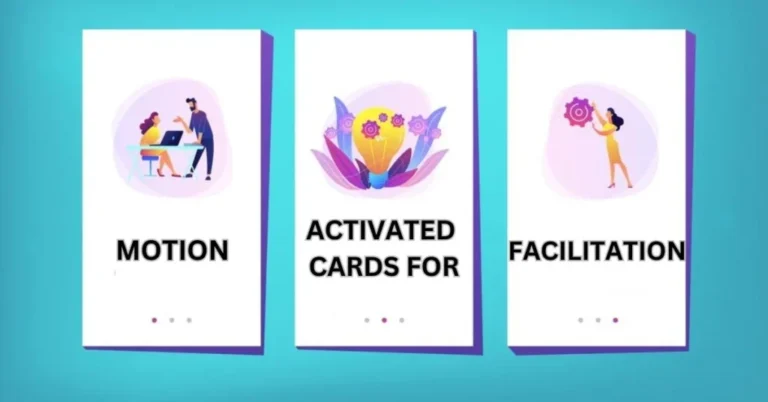
In today’s dynamic learning and collaboration environments, motion-activated cards have emerged as an innovative tool for facilitation. These interactive cards blend technology with traditional facilitation methods, creating engaging experiences for workshops, classrooms, and team-building exercises. This article explores their uses, benefits, and practical applications.
What Are Motion-Activated Cards?
Motion-activated cards are smart cards embedded with sensors that react to movement, touch, or proximity. They can trigger audio, visuals, or light cues, making them ideal for interactive learning and engagement. Designed to captivate attention, these cards are reshaping the way facilitators interact with participants.
Benefits of Motion-Activated Cards in Facilitation
1. Enhancing Participant Engagement
Motion-activated cards make learning sessions more engaging by incorporating multi-sensory elements. When participants interact with these cards, the immediate feedback—whether auditory or visual—keeps them focused and involved.
2. Encouraging Active Participation
By prompting actions such as flipping, shaking, or moving the cards, participants become active contributors rather than passive observers. This hands-on approach fosters better retention of information and creates a more memorable experience.
3. Boosting Collaboration
Facilitators often use these cards in group activities, encouraging teamwork and communication. For example, participants might solve puzzles or complete tasks requiring collaborative card interactions, fostering synergy and rapport.
Applications of Motion-Activated Cards
1. Workshops and Training Sessions
Motion-activated cards are perfect for corporate training and professional development workshops. They can deliver step-by-step instructions, feedback loops, or scenario-based simulations tailored to the session’s objectives.
2. Classrooms and Educational Settings
In educational environments, these cards simplify complex concepts through interactive demonstrations. For example, a science teacher might use cards that emit light when paired correctly to teach about electrical circuits.
3. Team-Building Activities
Motion-activated cards are excellent tools for team-building exercises, requiring groups to collaborate and solve challenges. Their immersive nature encourages creativity and out-of-the-box thinking.
4. Event and Exhibition Spaces
Interactive exhibits often feature motion-activated cards to provide visitors with personalized content, such as detailed information about artifacts or step-by-step guides for activities.
How to Integrate Motion-Activated Cards Into Facilitation
1. Plan Activities Around Their Features
Identify how the cards’ motion sensors and outputs—such as lights, sounds, or animations—can align with your facilitation goals. Tailor the content to create meaningful interactions.
2. Test for Reliability
Before your session, test the cards to ensure they work seamlessly. Pay attention to battery life, sensor sensitivity, and compatibility with your setup.
3. Incorporate Feedback Mechanisms
Use the cards to provide instant feedback. For example, correct answers can trigger positive reinforcement sounds or visuals, while incorrect interactions can provide guidance for improvement.
4. Blend With Other Tools
Motion-activated cards complement other facilitation tools such as flip charts, digital screens, or group discussions. Create a balanced approach for maximum impact.
Tips for Successful Implementation
- Know Your Audience: Customize the cards to fit the needs and preferences of your participants.
- Keep It Simple: Ensure the interactions are intuitive and do not overwhelm users.
- Iterate and Improve: Gather feedback after sessions to refine the cards’ effectiveness.
Future of Motion-Activated Cards in Facilitation
The integration of motion-activated cards with emerging technologies like augmented reality (AR) and artificial intelligence (AI) promises even greater possibilities. These advancements will enable facilitators to create highly personalized and adaptive learning experiences, keeping participants engaged in innovative ways.
Motion-activated cards are transforming facilitation by combining interactivity, technology, and creativity. Their potential to enhance engagement, improve collaboration, and simplify complex topics makes them an invaluable asset in a variety of settings.